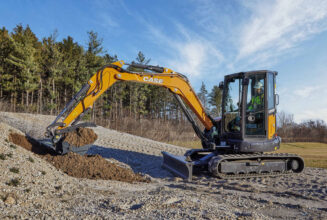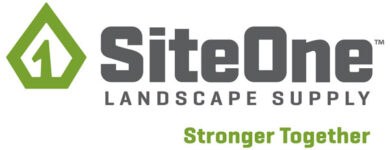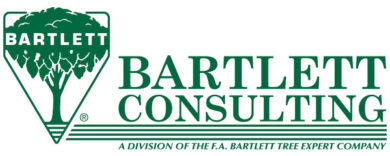Exclusive Interview with Irrigation Association President Douglas W. York
The Irrigation Association (IA) has made a strong push in recent years in terms of promoting “Smart” irrigation technologies and Smart watering practices. To get an inside perspective at the topic of Smart irrigation, and the irrigation industry as a whole, Landscape and Irrigation magazine recently spoke with Irrigation Association President Douglas W. York.
L&I: Manufacturers continue to develop new Smart irrigation technologies, and contractors have responded with the increased use of those technologies. What changes in regards to Smart irrigation are you most pleased with during the past few years? And in which areas can all of those in the industry continue to improve?
York: Major strides of progression have been accomplished through collaboration and innovation. Manufacturers have answered the call for continued advancement of irrigation technology; one of the areas we are seeing the greatest success in this regard pertains to irrigation controller development. There are several Smart controller options currently available, and the competition — combined with industry and consumer demand — will drive manufacturers to continue improving these technologies as we move forward.
The Irrigation Association’s Smart Water Application Technologies (SWAT) team of water purveyors and irrigation industry representatives have been working diligently to develop protocols for some of these advanced technologies, and these performance reports are proving an incredibly useful tool in the Green Industry’s arsenal. In some cases, they are even prompting some manufacturers to go back and make further improvements to their products.
The development and establishment of the Environmental Protection Agency’s (EPA’s) WaterSense Program is another area of excitement for our industry. The benefits are abundant: increasing consumer and industry awareness of water-efficient programs, products and practices; access to technical efficiency data for certified products; certified education programs; and certified professional referral and preference programs, to name a few.
Areas still ripe for continued development include, but are not limited to, moisture-sensor technology and irrigation spray efficiency. We would also like to see significant improvements in the development and successful promotion of rebate programs at the local level.
Two of the areas requiring incredible attention are awareness and contractor involvement. Awareness will continue to be our biggest challenge at the contractor level and the end-user level. As an industry, we need to do a better job of educating various stakeholder groups and the general public. We need to let them know that there are efficient options that are out there, and that they are already being used successfully to achieve real water savings. Some agencies are doing a great job, but we need more participation and collaboration to truly make our goal of outdoor water efficiency a reality.
We also need more contractor participation, period. At every level of the water efficiency game there are opportunities for involvement. Stand up, get involved and share your opinions, needs and concerns. The outdoor water-efficiency equation will not work unless our fellow landscape professionals embrace the opportunity to learn about new technologies, share them with clients, and begin installing efficient systems.
L&I: Green industry professionals are facing the challenge of using less water to maintain plant health, while at the same time dealing with more regulatory oversight. What advice do you have for landscape irrigation professionals when it comes to dealing with these challenges?
York: Again, the importance of taking an active role in the industry is essential for success. Landscape irrigation professionals need to sell their profession, and must become experts in water conservation. They need to engage in the dialogue, seek out opportunities for education, network at association meetings or trade shows, and, perhaps most importantly, understand what is happening in their own service territory.
A quick Internet search can provide you with detailed information about your local water authority, various rebate programs available, new products and key industry events that will benefit your business. The tools are out there for professionals to address these challenges head on, and succeed in ways they never thought possible.
L&I: The EPA and other government agencies have become increasingly interested in water conservation. How is the IA working with those agencies and policymakers to address their concerns and ensure that they are well informed?
York: The Irrigation Association (IA) has been working closely with the EPA’s WaterSense program to develop testing protocols, as well as education, product and professional certification programs. The IA’s Smart Water Application Technologies (SWAT) initiative has been instrumental in the EPA’s mission to develop its water-efficient product certification program. Four of the IA’s certification programs — Certified Irrigation Designer, Certified Irrigation Contractor, Certified Landscape Irrigation Auditor and Certified Golf Irrigation Auditor — have been approved for certification through the WaterSense program.
We’ve also been actively involved with the Alliance for Water Efficiency (AWE), and have members on the AWE board. We have staff members dedicated to addressing the irrigation industry’s objectives with various government agencies, and a Government Affairs committee focused on interfacing with government at both the federal and state levels — closely monitoring water policy, water conservation topics and other issues that impact the industry.
Government agencies are now looking to us as a resource to set up programs, obtain guidance and gain insight into green industry issues.
L&I: During your induction as President of the Irrigation Association, you encouraged the irrigation industry to become engaged in the association because the future of the green industry depends on the availability of water and its wise use involving innovative technology and practices. How can the industry become more actively involved with the IA?
York: There are several ways that industry professionals can become involved with the Irrigation Association:
- Become a member. Membership offers professionals countless opportunities to get involved, stay informed and grow their business. Premium memberships are also available.
- Get certified. Increase your knowledge of the latest products and practices, network with quality instructors and like-minded peers, and gain an edge on your competition by participating in one or more of the IA’s six certification programs.
- Volunteer for committees. The IA is always looking for engaged professionals to participate in a wide range of initiatives, such as government affairs, communication or membership.
- Join common interest groups. This is your chance to network and collaborate to improve niche segments of our industry, such as center pivot or micro-irrigation.
* Attend the annual Irrigation Show. Participate in technical sessions or education courses, network with exhibitors and attendees, learn about new products, or take a certification exam. This year, the Irrigation Show will take place in Anaheim, California, November 2-4.
Contact your IA representatives — we’d love to hear from you. Help us promote issues that are important to our industry, such as water conservation.
L&I: As President of the Irrigation Association, what have been your biggest challenges so far this year, and what are your primary areas of focus in the near future?
York: One area I consider to be the biggest, ongoing challenge is in the government affairs arena. The combination of proactively initiating dialogue to further advance green industry objectives and reacting to the legislature at both the sate and federal levels to ensure our positions are well receive and understood, is an intense process.
We work very hard to understand the breadth and depth of issues that concern our membership base and communicate these across the board within the public and government affairs arena with the unified goal of advancing our industry and our profession. It’s an arduous, continuous task that is incredibly important to our mission.
Another area to which we are devoting significant attention is the IA’s rebranding initiative. There are many components to this project, including technical improvements to our Web site that will enable us to improve our communication and service offerings, such as online education, to our membership base.
Moving forward, we’ll be focusing on making the technology improvements required to sustain our objectives, advancing the Web site and rebranding project, getting our online education system fully operational, recruiting quality staff members, and the developing key members.
L&I: How would you characterize the overall state of the industry at this point?
York: The agriculture market is strong. Crop prices are high, giving growers more discretionary income to purchase irrigation equipment. There is also a lot of positivism and excitement over the new Farm Bill, which will provide significant funding support for efficient irrigation systems.
The turf market is facing some tough challenges. The declining housing market and general slowing of the economy continues to be a serious concern. Every sector is feeling the effects of price increases. Prices for raw materials — as well as operational and transportation costs — have skyrocketed, creating a strain on supply.
The water scarcity issue will continue to be a hot topic of discussion and concern moving forward — but is probably our most promising area of growth as an industry.
We’re seeing an increase in collaboration between manufacturers, distributors, associations and government agencies that is resulting in important achievements, including the development of standards and protocols for water-efficient technologies, as well as best management practices.
Manufacturers are accepting the challenge of developing innovative, water-efficient solutions; distributors are increasing their water-efficient product offerings, and many are providing education programs focusing on water management issues; government agencies and associations are taking an active role in developing key legislative initiatives, rebate programs, subsidization and conservation programs; and landscape irrigation professionals are beginning to employ water-efficient products and best management practices.
Our challenges are great. But our collective will to innovate, collaborate and succeed is stronger.



